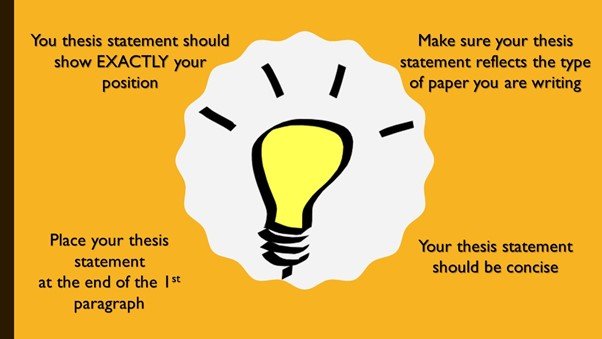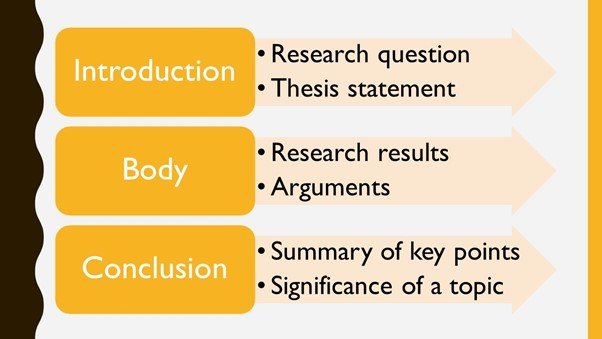Popular Lyric Writing: 10 Steps to Effective Storytelling

Are you staring at the blank page on your screen and have no idea how to approach your challenging research paper? Research papers are complex and time-consuming assignments and what is really important they make up a large part of student's grade in all classes. It's not a secret that academic writing is hard but written communication skills are essential for your success in college, graduate school, and in your future career. That's why you should work hard to master the art of paper writing.
If you are not sure where to start, read this article to learn about effective strategies that make this process as painless as possible.
How to Write an APA Research Paper
We'll break down the writing process into easy steps to help you understand how to write a research paper fast no matter how long it must be.
Step 1. Choose a Topic
Sometimes college students are assigned with their research paper topics, but if you are fortunate enough to have such an option, choose your topic wisely. First of all, think about choosing a challenging topic you are interested in. Then, you won't be bored when doing the research because you are sure to discover something new and you'll enjoy the writing process. Don't select subjects that are too technical or general.
If your topic is too broad, your research paper is unlikely to be successful because it will look like a general overview. You should narrow your topic down to a certain aspect, concept or idea and make it specific and manageable. For example, if your topic is "Global Warming", you should narrow it to "Causes of Global Warming", "Impact of Global Warming on Human Health" or something like that.
Step 2. Write a Working Thesis Statement

Prepare a working thesis before you actually organize your research because it will guide your investigation and will help you stay focused on your subject. Your thesis statement should be concise and reflect the type of paper you are writing. All research papers can be divided into 3 categories:
- argumentative or persuasive if you are arguing the conclusion;
- expository when you explain information;
- analytical when you present your analysis of certain information.
You have to devote enough of your precious time to creating a good strong thesis statement so that your project has a clear purpose. Your thesis should be debatable and narrow because your claims should be supported by evidence. If your claim is broad, you will need more evidence to convince your readers that you are right. Here is an example of a debatable thesis statement:
Climate change is the most pressing challenge facing the world today.
Step 3. Do Research on Your Topic
You should find enough secondary and primary credible sources on the subject of your paper, carefully read all of them, and find relevant evidence to support your thesis. At this stage, you should evaluate your sources, take notes, and start documenting your sources according to a citation style specified by your instructor (APA, MLA, Chicago, Harvard, etc.)
Make sure you use the latest edition of a specific style guide. You will use your notes about references later when writing your paper and building your bibliography. It's crucial to cite all sources that you used for quoting, paraphrasing, and summarizing to avoid plagiarism.
Step 4. Make a Good Outline
Your research has given you tons of great ideas. Now you have to organize them for your impressive presentation. Don't skip this vital step because without it, your project will lack focus and you will need more time for revising your draft trying to make sense of your jumbled thoughts. That's why you need an outline. You have to finalize your thesis and create a working outline that you plan to cover and that will serve you as a roadmap and keep you focused.
Think about key points that you'll need to develop to support your thesis statement. You can use them as subheadings for the body of your paper. Look through your notes and organize the information under each sub-heading. Make sure you include only relevant information that fits under your sub-headings and directly supports your thesis.
You should resist the temptation to include any information that doesn't fit into your outline no matter how interesting it is.
When writing an outline, you should keep in mind a typical research paper structure that commonly includes:
- a title page;
- an abstract;
- an introduction;
- a methodology section;
- findings/results;
- discussion;
- conclusion.
But if your research paper is not long, its format may include an introduction, body paragraphs, and a conclusion. In any case, you should follow specific guidelines provided by your instructor.

Step 5. Create the First Draft
This is the middle of the process. You have a clear direction and it's time to create the first draft with a title, in-text citations, and a reference page.
The title is very important if you want to make a good impression on your readers because it's the first thing that they see. It forms their view on what exactly they should expect in your paper. You should list the keywords that present the topic of your paper, methods you used, and results that you achieved. Now create a sentence that includes all the keywords that you have listed and delete the unnecessary words. After that, you need to link the remaining ones. Finally, you have to delete non-essential info and organize the remaining words in the logical order. You can also include the subtitle. Make sure that your title is concise.
Afterwards, you need to write an introduction, body paragraphs, and a conclusion. These are the main parts of your paper so let us provide you with some details on how to do it right.
How to Write an Introduction for a Research Paper
Start writing an intro. The introductory paragraph should begin with an attention grabber that may be:
★ a provocative question;
★ statistics;
★ an anecdote;
★ unusual facts, etc.
You are writing an academic paper but that doesn't mean you have to be boring. Next, you need to provide the background information, explain your goals, and how you plan to approach your research paper topic. You should finish your introduction with your thesis statement or research question. This section of your paper is not long so you are sure to finish it fast.
How to Write Body Paragraphs
Your outline will help you to complete this part of your paper. But you shouldn't think that you must strictly follow it. It may evolve and you are free to revise it and make changes. The key thing is to stay on your track and focus on your thesis. You should provide your points and support your main idea.
Start each body paragraph with a topic sentence and provide arguments and relevant evidence to support it. You should write as many body paragraphs as you have the key points.
How to Write a Conclusion for a Research Paper
Most research papers end with restarting their thesis statements. You can also do it but you shouldn't repeat it word for word. Paraphrase it or summarize the key points of your paper. You may emphasize the significance of your findings as well. A good idea is to provide some recommendations based on the results of your investigation or suggest some directions for further research.
Your rough draft is ready. Wondering what to do next? Go on reading to find some tips on how to revise your research paper.
How to Make Your Paper Perfect
No one can write their first draft perfectly. So, if you want to make a good impression on your professor and earn a high grade, you should revise your draft to make sure that your project is on point. Be ready that you may need to revise your project more than once because it is really worth doing.
Step 6. Revise, Edit and Proofread

You have to make large-scale changes and check the logic, flow, transitions, make changes in the structure and order of your paragraphs. You should make sure that all your ideas are fully developed and all the claims are supported by credible evidence. You may need to add some section headings.
The next stage is editing. You have to check and eliminate filler words and phrases, improve word choice, and correct mistakes in punctuation and grammar if you find any. You should look for:
- incomplete sentences;
- dangling modifiers;
- easily confused words (such as to, too, and two);
- spelling mistakes;
- apostrophes for possessives and plurals;
- quotation rules obeyed;
- comma use;
- eliminate contractions.
You will need to re-read your paper several times. A good strategy is to read your paper backwards. In this way, you will feel a little disoriented and will be able to catch more mistakes. You should start reading the last sentence, then check the second to the last one and continue doing it until you get to your first sentence.
You should ask your friends or family members to review your research paper and express their opinion about it. They should evaluate your argument, transitions, and the balance and look for any inconsistencies with usage, grammar or mechanics. Ask your friends to provide their feedback and make suggested changes if you think they make sense. Finally, you may print your paper and proofread it to eliminate minor mistakes or typos and ensure that your amazing research paper is flawless.
Step 7. Rely on Our Academic Custom Writing Service
You can use our easy guide to craft winning research papers fast, get better grades, and enjoy your life in college. Alternatively, you can address our specialists to write research paper for you. As a result, you'll spend less time but get more pleasure from studying at university.
![]()
Patricia Jenkins is the senior writing advisor at FastEssay blog for international students that seek quick paper assistance. In her blog, Patricia shares useful tips on productivity, writing, research, references. Sometimes Patricia goes off topic by sharing her personal experience peppered with lively humor and healthy irony. View all posts by Patricia Jenkins
Popular Lyric Writing: 10 Steps to Effective Storytelling
Source: https://fastessay.com/blog/7-steps-in-writing-a-research-paper-enjoy-your-student-life/